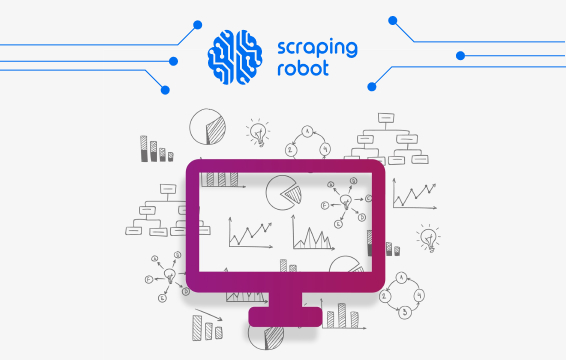Data Driven Strategy: Building A Data-Enabled Business

The best businesses create patterns, habits, and behaviors on social media and across the web to target their customers directly. I spend a lot of time on social media and online in general, and nothing is more glaringly a missed opportunity than when I see targeted ads that have no relevance to me. (Trust me, my muted list proves it.) This could be an example of buying an ad targeting the wrong audience or just creating a shallow marketing campaign. But how do you avoid this and target customers more deliberately? The answer is to employ a data driven strategy.
Allowing data to drive your business decisions means many things, but mostly, it means taking advantage of the digital footprint generated by your customers (and other people) to serve them better. The only problem with implementing a data driven strategy for your business is the acquisition of data in a cost-effective and timely manner to keep up with changes in the needs of your consumers. That’s where web scraping APIs come in. With a solid web scraping API, you can develop a data driven strategy on a bedrock of data collected directly from its source and feed directly into your business processes. If you already have a solid grasp of what it means to employ a data driven strategy, feel free to skip around to learn more about how web scraping APIs can be a key asset in your data collection.
Table of Contents
1. Data Driven Strategy: What Is It?
2. Using a Web Scraping API for Data Driven Marketing
3. What Are the Datasets You Need for Data-Driven Marketing?
Data Driven Strategy: What Is It?

The definition of data driven marketing reflects the importance of data in business. Data driven marketing is a process by which marketers gain insights and trends based on in-depth analysis informed by numbers. Numbers here is the data, and with an in-depth analysis of it, you can understand the best way to present your business to the public and make them patronize you more.
Now, before we go deeper into the essentials of implementing a data-driven strategy for your business, let’s look at the best method of collecting and feeding data into your business processes: using a web scraping API.
Using a Web Scraping API for Data Driven Marketing

Web scraping is the process of using a scraping bot to automatically extract large amounts of publicly available data from websites and transfer that into a condensed document. While web pages can hold an intimidating amount of data, the web scraping bots will parse through data to find the most relevant information. When this information is located and taken for transfer into a document (all automatically!), it’s then presented to you in one beautiful, organized spreadsheet. Usually, this process happens in a few minutes, and add in the time it takes to download your document; it’s pretty quick.
However, a web scraping API takes it one step further. Instead of just downloading your data into a spreadsheet, using a web scraping API allows you to feed data directly into your business software, be it marketing software, sales funnel, database software, or any other business process software that could benefit from data implementation.
For example, say you have developed a platform that allows users to search a particular location for the social media users with the highest followers. Now, your platform will include a search engine that will take requests from users on the front-end and an API that will direct data based on the requests on the back-end. Essentially, you’ve built a railroad and a train. All that’s left is the cargo that is supposed to go into the train. That is where a web scraping API comes in. Using a web scraping API with capabilities to scrape social media data like Scraping Robot’s API, you can pull the data you need from social media and send it to your own API which then directs it to the final destination. So now, you have a railroad (your search engine), a train (your own API), and the cargo (delivered by the web scraping API).
What Are the Datasets You Need for Data-Driven Marketing?

Now, what are the essential data types you need to be able to implement a data-driven strategy? The first step in using data for business is to know the types of data you need. With over a billion bytes of data being generated daily, you definitely do not want to spend time trawling through the internet, hoping to stumble on that piece of data that will revolutionize your business. No, you have to be specific and intentional in your search. So here are some basic data points that could serve as a baseline for implementing a data structure for your business:
- Location Data: Location data is extremely useful especially in marketing and sales. Knowing where most of your customers or audience are located helps you to create marketing campaigns and sales processes that implement elements of their location and connects with them better, For example, if you serve an international consumer base with different languages, you might want to enable translation services on your website, to enable customers with different languages to make use of your website. Collecting location data is how you make this decision.
- Social media info: Everybody is on social media now. However, the type of social media that your customers prefer can tell you a lot about who they are and how to approach them.
- Contact Information: If you sell to companies and businesses, it is imperative that you identify the right point of contact before creating a marketing campaign. If you sell tech solutions, then you most likely want to target the CTO. If you are selling financial solutions, the CFO is most likely your man. Whichever one it is, one thing you cannot do is spray-and-pray. With the right scraping API like Scraping Robot, you can collect these data sets and funnel them directly to where they will be of the most use.
- Business data: Sometimes, rather than a specific point of contact, what you need is general information about businesses in a specific niche; location, number of employees, valuation, contact info, website, etc. All these data points are very useful to your marketing department and should always be on hand if you sell in the B2B niche. With business scraping APIs like Scraping Robot, you can obtain all these datasets in the time it takes to say “wow!”
- Price data: This is one of the most essential data sets you need as a business especially if you are in a very competitive niche. Pricing data doesn’t just tell you how much your competitors are selling their goods and services, it tells you if they have a more cost-effective way of manufacturing or if they are cutting corners. It shows you the trend in prices over time, allowing you to see if there has been a general increase or decrease. This could potentially clue you into whether the demand for your goods or services is gradually fading away. That is how valuable pricing data is. With a scraping API like Scraping Robot’s Amazon scraper, eBay scraper, or our Home Depot scraper, or all of them combined, you can feed a steady stream of pricing data into your pricing strategy allowing you to react to any price changes in real-time.
- Product data: Know the field. That’s the rule in business especially when it comes to building products. If you want to build a better product than your competitors, it is essential that you first know what their product is made of, how they built it and what they intend it to do. Once you know this, you can pick the part they did well and do it too, then improve on the parts where they didn’t measure up. That is how you beat the competition. With the aid of a scraping API like Scraping Robot’s AliExpress scraper or Wayfair scraper, you can pull product details from the internet regularly and in real-time to inform your product development process.
Scraping Robot as Your Go-to Marketing API

Honestly, we think many things are great about Scraping Robot, but we find our most significant selling points to be our easy to use interface, low prices, our custom module options and of course, our API. You don’t have to be an advanced programmer to work our API into your business processes and start integrating data directly from the web. Also, by using proxies from our partner company, Rayobyte, you get to scrape the internet at ridiculous speeds, efficiently and securely.
Our API page tells you all you need to get started. Scraping Robot offers you 5000 free scrapes a month to get started with your account. If that is not enough for you, our pricing page gives you an exact cost estimate of the number of additional scrapes you’ll need. With each additional scrape costing only $0.0018, finding a place in your budget is accessible without the gimmick of a subscription or another one-time fee.
Conclusion
 With the right tools, building a data drive strategy is easier than you think. Using a data collection framework based on a web scraping API, you can collect data when you need it and as you need it, allowing you to avoid some costly bad campaigns. With the influx of data online, targeting the right consumers with the right messages can protect you from brand dissatisfaction or from losing customers. Scraping Robot’s marketing API has all of the tools ready for you to get started on your new marketing strategy today!
With the right tools, building a data drive strategy is easier than you think. Using a data collection framework based on a web scraping API, you can collect data when you need it and as you need it, allowing you to avoid some costly bad campaigns. With the influx of data online, targeting the right consumers with the right messages can protect you from brand dissatisfaction or from losing customers. Scraping Robot’s marketing API has all of the tools ready for you to get started on your new marketing strategy today!
The information contained within this article, including information posted by official staff, guest-submitted material, message board postings, or other third-party material is presented solely for the purposes of education and furtherance of the knowledge of the reader. All trademarks used in this publication are hereby acknowledged as the property of their respective owners.
